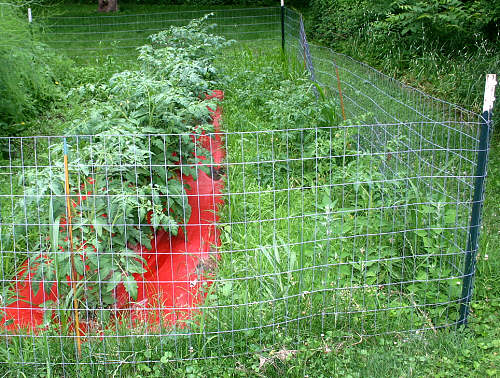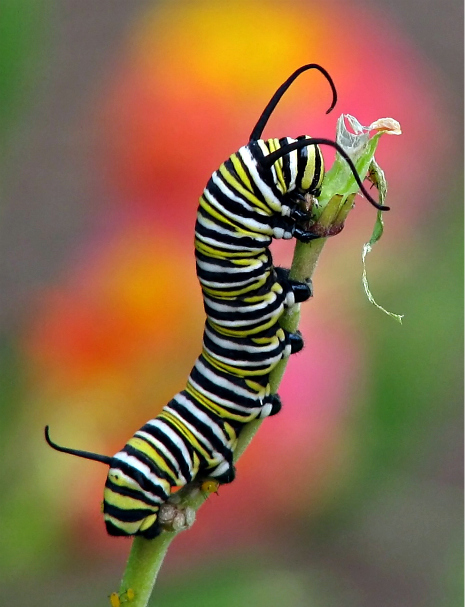A Quick Tomato Primer, because, you can never be to rich, too thin, or grow too many tomatoes! This is a quick and basic informational piece on tomatoes that I wrote two years ago. Everything still applies.
It's that time of the year......that all gardeners look forward to. What shall we plant, and what wonderful yields will we realize? The coming season is always full of potential. I have had friends ask me in particular about my favorite tomato varieties and some other information regarding these home gardener's favorites. There's nothing like a home grown tomato, is there? I'm pretty passionate about my tomatoes. Anybody that knows me well knows that. So let's talk Tomatoes!
I have had friends ask me in particular about my favorite tomato varieties and some other information regarding these home gardener's favorites. There's nothing like a home grown tomato, is there? I'm pretty passionate about my tomatoes. Anybody that knows me well knows that. So let's talk Tomatoes!
A quick primer on a few terms you see in descriptions~
Tomato vines are either Determinate or Indeterminate.
- Determinate vines do not need staking and harvest and bearing occurs in a two to 3 week period.
- Indeterminate vines must be staked (they go everywhere!) They will bear fruit right up until it frosts.
- Cracking, which you hear referred to a lot in tomatoes, mostly occurs when they have an inconsistent watering schedule. That's easily cured. Water them in a consistent manner, don't let them get too dry, and then suddenly flood them.
-
Blossom End Rot-That's every bit as bad as it sounds. It has to be prevented-there is no cure, and once it happens, the fruit is beyond saving-just very bad. It occurs when there is an imbalance in fertility due to a deficiency of calcium. This can be averted through a good fertilizer formulated especially for tomatoes along with spray that is very effective to prevent it, if you're worried about having this problem.
FAQ's that I hear a lot are:
Q: What are those little letters on some of the labels? What does V, F, FF, N, and T mean?
A: The little letters on many of the wonderful modern varieties of tomatoes indicate resistance to common diseases that afflict tomatoes as follows:
- V: Verticillium Wilt
- F: Fusarium wilt, Race I
- FF: Fusarium Wilt, Race I and II
- N: Nematodes
- T: Tomato Mosaic
Without getting into a long discussion in this post, let's just say, all those things can afflict tomatoes in the Ozarks, or really, anywhere. They're bad and ugly. They can ruin your crop. And after all your hard work, who wants that? If you select a variety that is resistant to some of these things, you have just raised your odds of a successful crop. That is the beauty of modern plant breeding and varieties. Can you say Bio-Diversity? I knew that you could. :)
Q: I want to raise heirloom varieties of tomatoes and they don't have any of those letters on the labels. Is that bad?
A: No. A good strategy for success is to select a few different varieties of tomatoes, some with resistance and some of your favorite heirlooms.The old saying is really true-don't put all your eggs (or tomatoes) in one basket-and don't rely on one variety of tomato! Depending on the weather and the conditions, you may not have any trouble at all with those things, but if you do, you have your modern resistant varieties to fall back on! Yay!
Q: What are some of Julie Brown's favorite varieties?
A: Some of my favorites that seem to make a nice mix of varieties and have a high success rate include:
Arkansas Traveler-actually an heirloom variety, this long time standby does have some resistance to diseases. Length to harvest: 85 days-tolerates heat and humidity well. Juicy mild flavored fruits resist cracking. Indeterminate vines resist disease.
Jubilee-Ahhhhh, my favorite yellow. Very dependable-1943 All-America Selections Winner! 72 days. Plant produces high yields of golden-yellow tomatoes. Excellent for making tomato juice and canning. Also good in salads and cooking. A low acidity variety. Indeterminate.
Celebrity-VFFNT Quite disease resistant! Another dependable, moderately sized red. 72 days-Consistently strong yields of deep red 8 oz. fruits. Determinate.
Early Girl-52 days VF-Ripe fruit fast! Sets early, great tasting fruit all summer. Firm tomatoes, up to six ounces, resist blemishes.Indeterminate.
Big Beef- 73 Days VFFNT-Old fashioned flavor and colossal size. The top beefsteak! Extra-heavy yields of 10to12 ounce fruits. Indeterminate.
German Pink Beefsteak- 85 days – A very sweet variety that produces large, meaty, 1 to 2 pound fruits. This German heirloom resists cracking and has few seeds, making it a great canning tomato. Indeterminate vines. *I am not sure this is the exact variety I have grown-mine was a pink beefsteak-but this should be representative of it.
Those are my all time, most dependable, favorites. I like a beefsteak type, some yellow tomatoes are a nice change of pace, and I like a few different varieties, some early, some late to have all during the season. In 2010 I also added Rutgers and Delicious for new varieties (for me, anyway). Add to this a grape tomato-they will be the very earliest-they can go into your salad and tide you over until the big ones are ready-and maybe a cherry, some roma, and the specialty heirloom of your choice (I like the yellow pear), and you've pretty much got tomato garden paradise on your hands.
Photo Credit: MaplelessInSeattle on Flickr
~Coming Soon-Do Tomatoes Prefer Red?
Happy tomato gardening! ~JB
 Julie A. Brown Posted on
Julie A. Brown Posted on  Monday, April 16, 2012
Monday, April 16, 2012 







